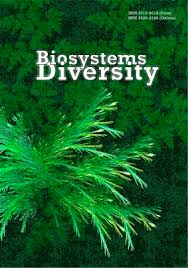Variability of the structure of winter microbial communities in Chelyabinsk lakes
Variability of the structure of winter microbial communities in Chelyabinsk lakes
Author(s): S. V. Andreeva, Y. Y. Filippova, E. V. Devyatova,, D. Y. NokhrinSubject(s): Energy and Environmental Studies, Regional Geography
Published by: Дніпропетровський національний університет імені Олеся Гончара
Keywords: water of surface water bodies; microbial communities of water bodies; anthropogenic load; canonical correspondence analysis; industrial megalopolis lakes;
Summary/Abstract: Microorganisms form complex and dynamic communities that play a key role in the biogeochemical cycles of lakes. A high level of urbanization is currently a serious threat to bacterial communities and the ecosystem of freshwater bodies. To assess the contribution of anthropogenic load to variations in the structure of winter microbial communities in lakes, microorganisms of four water bodies of Chelyabinsk region were studied for the first time. We used cultural, chromatography-mass spectrometric, and modern methods of statistical data processing (particularly, multivariate exploratory analysis and canonical analysis of correspondences). The research showed that the composition of winter microbial communities in lakes Chebarkul’, Smolino, Pervoye, and Shershenevskoye Reservoir did not differ significantly between the main phyla of microorganisms. The dominant microorganisms were found to be of the Firmicutes phylum and Actinobacteria phylum. The structure of bacterial communities had special features depending on the characteristics of the water body and the sampling depths. Thus, in the lakes Smolino, Pervoye, and Shershenevskoye Reservoir, an important role was played by associations between microorganisms – indicators of fecal contamination: coliform bacteria and Enterococcus. On the contrary, in Chebarkul’ Lake, members of the genus Bacillus, which are natural bioremediators, formed stable winter associations. However, the differences between water bodies and sampling depths reflected 28.1% and 9.8% of the variability of the winter microbial communities, respectively. The largest contribution (about 60%) to the variability of the structure was made by intra-water processes, which determined the high heterogeneity of samples from different water areas. We assume that an important role in this variability was played by the high anthropogenic impact in a large industrial metropolis. In our opinion, this line of research is very promising for addressing key environmental issues.
Journal: Biosystems Diversity
- Issue Year: 29/2021
- Issue No: 4
- Page Range: 311-318
- Page Count: 8
- Language: English

